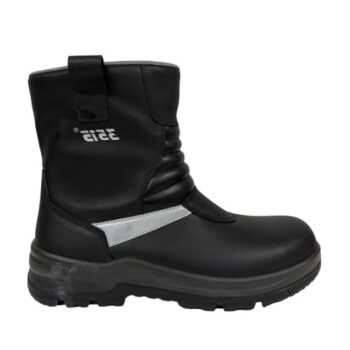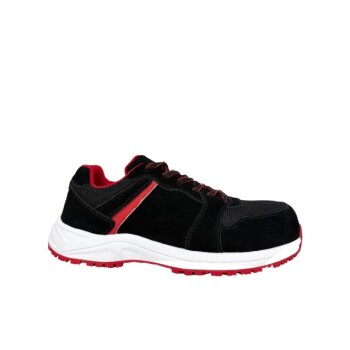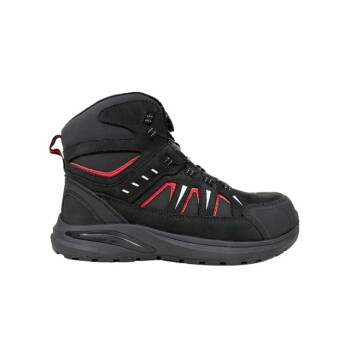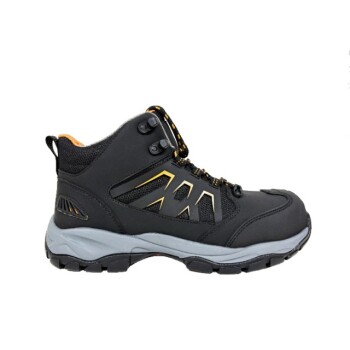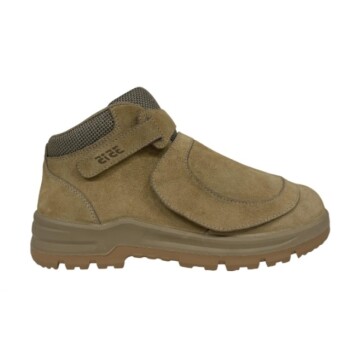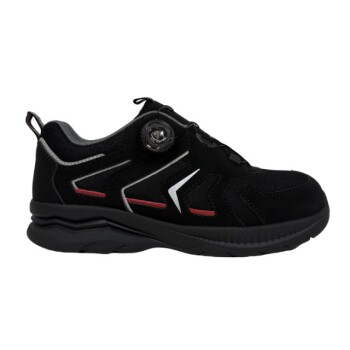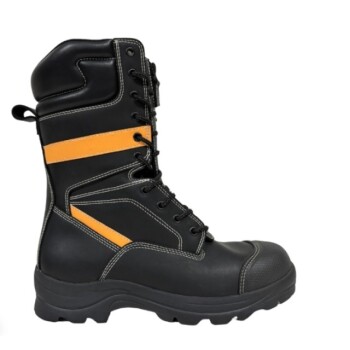Yes, safety shoes are unequivocally worth the investment. They are an essential piece of personal protective equipment designed to significantly reduce the severity of workplace injuries, from crushing impacts to debilitating slips and falls, while also supporting long-term foot health.
The true value of safety footwear isn't just in preventing a single catastrophic accident; it's a comprehensive system that mitigates a wide range of daily workplace hazards, making it a critical investment in both your immediate safety and your long-term well-being.

The Anatomy of Protection: What Makes a Shoe "Safe"
Safety footwear is engineered with specific components that work together to shield you from harm. Understanding these parts reveals why they are so much more effective than standard shoes.
The Reinforced Safety Toe
This is the most well-known feature. A reinforced toe cap, made from materials like steel or lighter-weight composites, is built into the shoe to protect your feet from heavy falling objects (impact) and compression risks.
The Foundation: Slip-Resistant Outsoles
Slips and falls are among the most common workplace injuries. Safety shoes feature specially designed outsoles with tread patterns and compounds that provide superior traction on wet, oily, or otherwise slick surfaces.
Guarding Against Hidden Dangers
Many hazards aren't visible. Safety shoes can include puncture-resistant midsoles to protect you from stepping on nails or other sharp objects, and Electrical Hazard (EH) ratings to prevent shocks from accidental contact with live circuits.
Specialized Features for Specific Roles
Depending on the environment, shoes can be equipped with advanced protection. This includes features like heat resistance, metatarsal guards for top-of-foot protection, waterproofing, and electrostatic dissipative properties.
Understanding the Trade-offs
While the benefits are clear, it's important to approach safety footwear with a realistic perspective.
The Initial Cost vs. Long-Term Value
Quality safety shoes are more expensive than standard footwear. However, they are a cost-effective investment over time, as their durable construction means they last significantly longer and avoid the need for frequent replacements.
The Myth of Inevitable Discomfort
Older safety shoes earned a reputation for being heavy and uncomfortable. Modern designs prioritize ergonomics, using lighter composite materials, better inner linings, and supportive insoles to ensure comfort throughout long work hours.
Protection Has Weight and Bulk
Even with modern materials, safety features will always add some weight and rigidity compared to a casual shoe. This is a necessary trade-off for the level of protection they provide. Choosing the right fit is critical to managing this.
Making the Right Choice for Your Goal
The "best" safety shoe is the one tailored to your specific workplace hazards and daily tasks.
- If your primary focus is construction or heavy industry: Prioritize maximum impact protection with a steel or composite toe, a puncture-resistant midsole, and a metatarsal guard.
- If your primary focus is food service, healthcare, or wet environments: A certified slip-resistant outsole is your most critical feature to prevent falls on slick floors.
- If your primary focus is electrical work: You must select footwear with a specific Electrical Hazard (EH) rating to insulate you from ground-fault shocks.
- If your primary focus is all-day comfort during long shifts: Look for lighter composite toes, high-quality insoles, and features like wide-fit options to reduce fatigue.
Investing in the correct safety footwear is a direct investment in your ability to work safely and effectively each day.
Summary Table:
| Key Feature | Primary Benefit | Common Use Cases |
|---|---|---|
| Reinforced Toe Cap | Protects from impact & compression | Construction, Warehousing, Manufacturing |
| Slip-Resistant Outsoles | Prevents slips and falls | Food Service, Healthcare, Mechanics |
| Puncture-Resistant Midsoles | Guards against sharp objects | Construction, Demolition, Recycling |
| Electrical Hazard (EH) Rating | Insulates from electrical shocks | Electrical Work, Utilities |
| Metatarsal Guard | Protects the top of the foot | Heavy Industry, Logging |
Ready to equip your team with the right safety footwear?
As a large-scale manufacturer, 3515 produces a comprehensive range of high-quality safety shoes and boots for distributors, brand owners, and bulk clients. Our production capabilities encompass all types of protective footwear tailored to your specific industry hazards.
We ensure durability, comfort, and compliance with safety standards, helping you protect your workforce effectively.
Contact us today for a consultation and let's discuss your specific needs!
Visual Guide
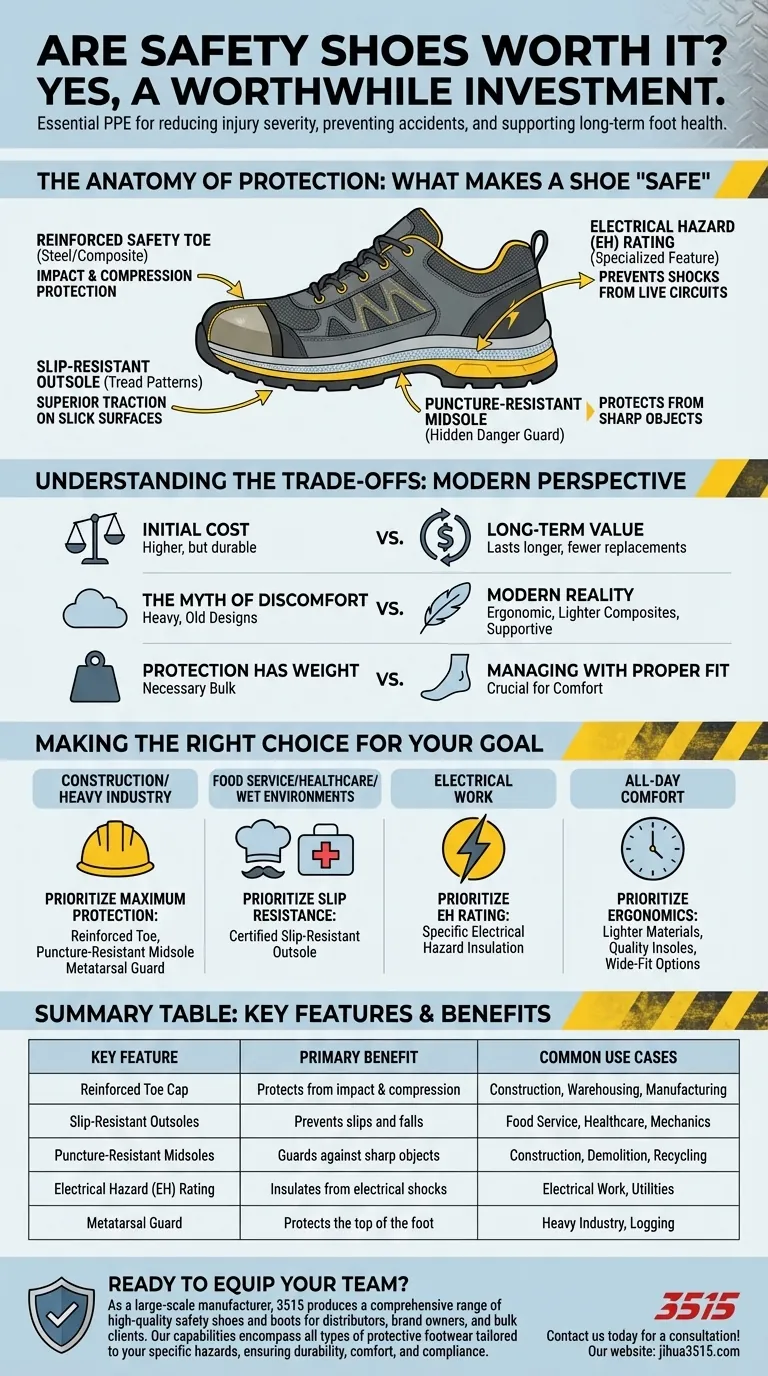
Related Products
- Premium Waterproof High-Cut Industrial Safety Boots for Wholesale and Bulk Orders
- Wholesale Premium Waterproof Nubuck Safety Shoes Boots
- Premium Suede Sport Safety Shoes for Wholesale & Bulk Orders
- Advanced KPU Athletic Safety Shoe with Steel Toe Cap Anti-Slip Rotary Lacing System
- Heavy Duty Nubuck Safety Boots Safety Shoes for Global Distribution
People Also Ask
- What does a grey rectangle symbol on safety footwear mean? A Guide to Grade 2 Toe Protection
- What are the common uses of safety shoes? Essential Foot Protection for Every Industry
- How should one choose safety boots based on workplace hazards? A Step-by-Step Guide to Perfect Protection
- What safety boots are recommended for the construction industry? Ensure Maximum Protection on the Job Site
- Why are protective work boots essential in certain industries? Protect Your Workforce from Hazards
